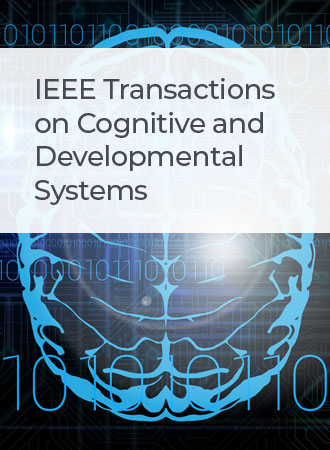Kernel-Ridge-Regression-Based Randomized Network for Brain Age Classification and Estimation
IF 5
3区 计算机科学
Q1 COMPUTER SCIENCE, ARTIFICIAL INTELLIGENCE
IEEE Transactions on Cognitive and Developmental Systems
Pub Date : 2024-01-18
DOI:10.1109/TCDS.2024.3349593
引用次数: 0
Abstract
Accelerated brain aging and abnormalities are associated with variations in brain patterns. Effective and reliable assessment methods are required to accurately classify and estimate brain age. In this study, a brain age classification and estimation framework is proposed using structural magnetic resonance imaging (sMRI) scans, a 3-D convolutional neural network (3-D-CNN), and a kernel ridge regression-based random vector functional link (KRR-RVFL) network. We used 480 brain MRI images from the publicly availabel IXI database and segmented them into gray matter (GM), white matter (WM), and cerebrospinal fluid (CSF) images to show age-related associations by region. Features from MRI images are extracted using 3-D-CNN and fed into the wavelet KRR-RVFL network for brain age classification and prediction. The proposed algorithm achieved high classification accuracy, 97.22%, 99.31%, and 95.83% for GM, WM, and CSF regions, respectively. Moreover, the proposed algorithm demonstrated excellent prediction accuracy with a mean absolute error (MAE) of基于核岭回归的脑年龄分类与估算随机网络
大脑加速衰老和异常与大脑模式的变化有关。需要有效可靠的评估方法来准确地分类和估计脑年龄。本研究利用结构磁共振成像(sMRI)扫描、三维卷积神经网络(3-D-CNN)和基于核脊回归的随机向量功能链接(KRR-RVFL)网络,提出了一种脑年龄分类和估算框架。我们使用了公开的 IXI 数据库中的 480 张大脑 MRI 图像,并将其分割为灰质(GM)、白质(WM)和脑脊液(CSF)图像,按区域显示与年龄相关的关联。利用 3-D-CNN 从核磁共振图像中提取特征,并将其输入小波 KRR-RVFL 网络,用于脑年龄分类和预测。所提出的算法实现了较高的分类准确率,对 GM、WM 和 CSF 区域的分类准确率分别为 97.22%、99.31% 和 95.83%。此外,所提出的算法还表现出了极高的预测准确性,对 GM、WM 和 CSF 区域的平均绝对误差(MAE)分别为 3.89 美元年、3.64 美元年和 4.49 美元年,证实了 WM 体积的变化与正常脑衰老有显著相关性。此外,基于体素的形态测量(VBM)检查了不同脑区与年龄相关的 GM、WM 和 CSF 组织体积的解剖学改变。
本文章由计算机程序翻译,如有差异,请以英文原文为准。
求助全文
约1分钟内获得全文
求助全文
来源期刊

IEEE Transactions on Cognitive and Developmental Systems
Computer Science-Software
CiteScore
7.20
自引率
10.00%
发文量
170
期刊介绍:
The IEEE Transactions on Cognitive and Developmental Systems (TCDS) focuses on advances in the study of development and cognition in natural (humans, animals) and artificial (robots, agents) systems. It welcomes contributions from multiple related disciplines including cognitive systems, cognitive robotics, developmental and epigenetic robotics, autonomous and evolutionary robotics, social structures, multi-agent and artificial life systems, computational neuroscience, and developmental psychology. Articles on theoretical, computational, application-oriented, and experimental studies as well as reviews in these areas are considered.
 求助内容:
求助内容: 应助结果提醒方式:
应助结果提醒方式:


